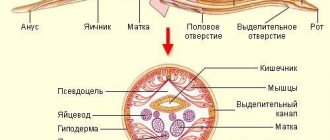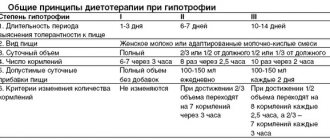One of the most common diseases in pediatrics is inflammation of one of the ear sections - otitis media. And the area most susceptible to it is located behind the eardrum and is called the middle ear. According to statistics, it becomes inflamed in about half of children under one year old, and by the age of three this figure already reaches 90%, and some get sick more than once. If treatment is not started in a timely manner, the disease will become chronic. There is another danger. Acute otitis media in children is initially serous, but in some cases it quickly transforms into purulent. And this already threatens the development of complications and requires urgent medical attention.
Causes
Otitis externa is provoked by:
- ear injuries;
The infection enters the bloodstream through cuts and open wounds. Children often inflict them on themselves while cleaning their ears with foreign objects.
- water that got into the ear while swimming in a dirty pond;
- excessive hygiene;
Sera is the protector of children's ears. Thorough cleaning of sinks from “accumulations of dirt” opens the door to infections and harmful bacteria.
- E. coli, staphylococci, fungi.
The most common causes of otitis media are:
- chronic diseases of the nasopharynx;
These are a runny nose, sinusitis, adenoids, tonsillitis, pharyngitis, sinusitis. The Eustachian tube in newborns and preschoolers is shorter than in adults, and there are no complex bends in it. It is much easier for pathogenic bacteria to reach the middle ear.
- hypothermia, overheating;
- ARVI, colds;
- decreased immunity;
- allergic rhinitis;
- incorrectly selected position for feeding infants.
The baby should not lie head down on his back.
In this case, milk flows into the ear, deep into the nasopharynx. Food debris gets stuck near the eardrum and causes inflammation.
Children suffer from internal otitis due to:
- acute otitis media of the middle ear, if medical assistance is not provided;
- meningitis, the infection penetrates the lining of the brain.
Inner ear infections need to be treated urgently! If left unattended, the child faces death or disability.
Prevention
To prevent the baby from getting an inflamed middle ear, parents should take the following preventive measures:
- Attach your baby to your breast correctly.
- Maintain lactation.
- Monitor your baby's nutrition.
- Avoid drafts.
- Control humidity and air temperature.
- Clear mucus from your child's nose.
- Teach your baby to blow his nose correctly.
- Rinse your nose with saline solutions.
- Treat colds and flu.
- After bathing, remove excess water from your ears.
Classification and symptoms
According to the location of the source of inflammation
- outer;
The tissues of the ear canal and auricle become infected and affected.
- average;
Pathological processes occur in the middle ear cavity.
- internal (labyrinthitis);
The rarest type of ear disease, the infection affects the structures of the inner ear, the vestibular apparatus.
By distribution
- bilateral (double);
If both ears are affected.
- unilateral (left-sided or right-sided);
One of the ears is infected.
The following manifestations are common to all types of inflammation:
- Ear ache;
- hearing loss;
- Heat;
- vomiting, diarrhea, nausea;
- loss of appetite;
- irritability;
- lethargy.
In infants and preschoolers, middle ear infection is most common. Otitis media is divided into several types, based on the accompanying symptoms.
By type of pathology
- Purulent.
The ear cavity fills with pus. The sac of exudate presses on the eardrum, ruptures it, and comes out through the auditory tube.
Inflammation is accompanied by pain, hyperthermia, and lethargy.
- Catarrhal.
Shooting in the ear, redness of the internal cavity, decreased hearing, pain, dry cough. There is no pus or other discharge. Sometimes the behind-the-ear lymph node becomes inflamed.
- Serous.
The presence of fluid inside the ear cavity, which remains after previous otitis media. Occurs in 35% of babies. This leads to hearing and speech impairment. Therapy for serous otitis involves pumping out stagnant fluid using a tube and shunting the eardrums.
- Bullous.
Acute otitis media
If the health condition of a small child deteriorates rapidly, he complains of pain in the ear, the temperature rises to 38°C, then we are talking about an acute form of otitis media. The development of the disease occurs according to the following scenario:
- Severe pain and hyperthermia occur.
- Symptoms appear quickly and progress. A newborn or one-year-old baby cannot report pain, so it cries, pulls its ear, and scratches its head in the area of the hearing organs.
- There is visible pus in the ear. After 2–3 days, the eardrum ruptures, and exudate gradually pours out of the auricle. The baby feels better, the pain goes away, the fever subsides.
- If the pus does not come out on its own, the doctor helps the exudative sac break through by making a small puncture.
- The membrane heals, the pus comes out of the shell completely. The pain goes away completely. The small child begins to hear clearly, the general somatic condition of the baby and sleep are restored.
Acute otitis media is often caused by an untreated runny nose or improper nose blowing. Teach your baby to open his mouth when blowing his nose. This way, pathogenic bacteria will not be able to get from the nasopharynx into the ear through snot.
Clinical manifestations of pathology
The inflammatory process of the external ear apparatus is the easiest. The inflammatory process in the middle or inner ear is more severe, the duration of the course of therapy increases, and the likelihood of possible complications also appears.
The most common symptom of this pathology is aching pain, which appears periodically.
Swelling in the area of the auricle, redness and hyperemia of the mucous membrane, as well as body hyperthermia (which, depending on the severity of the disease, varies from subfebrile to febrile) may be observed.
In a child, hyperthermia is accompanied by intense painful sensations, the quality of sound perception further deteriorates, and a feeling of congestion appears in the ear. In severe cases, signs such as purulent or serous discharge from the ear canal appear.
Acute otitis in a child requires therapeutic intervention in a hospital setting. If conservative treatment is not enough, the doctor prescribes surgical intervention, which ensures the outflow of accumulated purulent contents.
Diagnostics
In order to promptly recognize otitis media in childhood, it is very important to see a specialist. Only an otolaryngologist can accurately diagnose the type of disease using an external examination and laboratory tests.
The doctor prescribes:
- otoscopy;
This is an instrumental examination of the eardrum. Using a special device, the doctor sees tissue thickening, hyperemia, suppuration, and perforation.
- X-ray of the temporal bones;
The visual condition of the bones and pneumatization of the cavities are assessed.
- CT scan of the temporal bones;
Prescribed in unclear cases.
- audiometry;
Necessary for examining children with a chronic form of otitis, decreased hearing due to frequent inflammation.
- assessing the patency of the Eustachian tube;
- examination by a neurologist;
If complications are suspected (meningitis, encephalopathy).
Important! Examination of children with chronic forms of otitis is best carried out in a hospital. This will allow you to undergo a comprehensive diagnosis, identify causes and possible complications faster.
How not to cause harm
The only thing that can harm a baby with otitis media is self-medication. Parents should absolutely not do the following:
- independently diagnose the disease;
- prescribe treatment without consulting a doctor;
Using drops and taking antibiotics can harm the baby. Medicines are prescribed only by a doctor, based on the type of otitis media, age and general health of the baby.
- warm the ear, legs, head;
Inflammation increases under the influence of heat.
- interrupt therapy after symptoms disappear;
The course of antimicrobial drugs lasts at least 10 days, instillations and rinsing are done until the membrane heals and all the pus comes out of the ear. Stopping treatment before complete recovery risks recurrent otitis media.
A competently prescribed course of medications and physical procedures after a detailed examination guarantees complete recovery from the disease, even at home, on an outpatient basis, without placing the child in a hospital.
When is it necessary to consult a doctor?
Many parents do not like to take their child to hospitals and will try to cure the disease themselves, but there are situations when it is better not to self-medicate in order to avoid sad consequences:
- It is strictly prohibited to treat such a pathology for infants at home, since it is unknown how the child’s body will react to certain medications. Many drugs or herbs cannot be used at this age to relieve symptoms;
- your child’s temperature rises above 38.50C;
- the traditional medicine or medications used do not reduce pain;
- the presence of purulent discharge;
- hearing loss;
- inflamed lymph nodes.
Important: many pediatricians do not recommend treating otitis media for children at home, as they may not notice the spread of the infectious process deep into the ear, which will lead to complications such as mastoiditis, complete hearing loss, etc.
First aid for otitis media
Sometimes objective reasons prevent parents from bringing their baby to the hospital immediately after detecting the first signs of inflammation and calling an ambulance. In this case, the child needs to provide first aid at home or on the road:
- neutralize pain;
Use anti-inflammatory drugs that will relieve pain and lower the temperature. These are Ibuprofen, paracetamol, Ibuklin Junior.
Choose candles, syrups for infants, tablets for older children.
- drop drops;
Use the medicine "Otipax" if the eardrum is not damaged and pus does not flow from the ear. An analogue of Otipax is the cheaper Otirelax. The medications include phenazone and lidocaine. They relieve inflammation and pain. For infants, 2 drops are instilled into each ear, for children from two years old - 3–4.
Important! Don't delay visiting the clinic. Untreated, chronic otitis is dangerous for preschoolers with many complications.
How to instill drops correctly
The main way to treat otitis media in children is to instill vasoconstrictor, anti-inflammatory drops into the ear. This seemingly simple procedure must be done correctly. Follow the recommendations:
- Warm the jar of medicine to 24–25°C, for infants – to 36°C.
The bottle can be placed under hot water, pour the contents into a warm spoon, and from there put it into a pipette.
- If an infant drinks from a bottle or sucks on a pacifier, then wait until the process is completed and remove the pacifier from the mouth.
- Place the patient on his side, pull the ear back, thus straightening the ear canal.
- Put the medicine in both ears, even if only one hurts.
Take the baby in your arms, keeping his body in a lateral position for 8–10 minutes. Don't let the droplets leak out.
Basic Rules
If acute otitis media develops in a child, treatment should be timely and comprehensive. The doctor usually prescribes standard therapy for most cases, which involves:
- The use of heat compresses for warming up. Such measures are advisable for several hours, before the outflow of purulent contents begins.
- The use of drops containing ethanol is not permitted. This is fraught with burns of the mucous membranes of the nasopharynx and ear canal.
- In young patients, this form of the disease tends to progress quickly, so the purulent contents begin to drain within a day.
- If a doctor prescribes a paracentesis procedure, it must be completed as quickly as possible.
- Removing accumulated mucus from the ear canal.
- After cleansing is completed, vasoconstrictors should be used.
- Antibacterial agents.
- Analgesics, antipyretics.
- Physiotherapeutic treatment, which involves undergoing UHF and electrophoresis.
- Use of antihistamines.
Compresses on the ear
According to Dr. Komarovsky, a compress on the ear is not an effective method of treating inflammation, but it also does not have a negative effect on the child’s condition.
It is used only to reassure grandmothers who do not see how and when their beloved grandson is being treated, and a bandage made of folded gauze is used as an alibi for a caring mother.
But not all pediatricians agree with the point of view of the famous video doctor, therefore they advise parents to use compresses to reduce pain and warm the ear in case of catarrhal disease, that is, in the absence of purulent discharge from the ear canal.
Parents need:
- fold a bandage out of gauze;
- make a cut in the middle;
- moisten gauze in vodka or alcohol solution;
- squeeze out, apply to the sore ear;
- cut a piece of paper, a little larger than the bandage, put it on top of the compress, it will absorb excess alcohol;
- Carefully place a layer of cotton wool on the paper so that it extends beyond the edges of the compress;
- Put a hat on the baby and tie a scarf.
You can keep the compress for 4 hours. It is better to do it at night so that the baby does not rip off the bandage.
In what cases can otitis media be treated at home?
In each child, the specific symptoms of this pathology may manifest themselves differently, but there are some principles when treatment at home is allowed:
- the increase in temperature does not reach 38.50C;
- the baby’s general condition does not cause concern and does not affect his behavior;
- School-age children tolerate this disease more easily due to a more developed immune system.
Possible complications
The consequences of otitis media include the following pathological conditions:
- hearing impairment;
Prolonged hearing loss leads to speech delays and nervousness in the baby. In rare situations, pus can only be removed surgically.
- rupture of the eardrum;
The logical conclusion of otitis, a breakthrough helps the pus to come out. After the lumen appears, the child feels better, and the wound heals after a couple of days.
- mastoiditis;
This is an inflammation of the tissues of the temporal bone, more precisely, the mastoid process, which is located behind the ear. Usually this cavity is filled with air. After otitis media it becomes inflamed and red. The child will complain of migraines, vertigo, nausea, and fainting.
ethnoscience
Caring grandmothers know how to treat otitis media in a child at home, relieve pain using folk methods and natural remedies. Let's give just a small list.
- Instillation of boric alcohol, hydrogen peroxide.
Warm the solution, drop 2 drops into each ear. Place a piece of cotton wool on top. Boric acid will warm. Do not use this method if your eardrum has ruptured.
- Compress with salt.
Take a grain of regular salt and heat it in a frying pan or in the microwave. Place it in a sock and apply it to the sore ear. Keep for 30 minutes. The baby's pain will go away and he will fall asleep.
- Lotion with camphor oil.
Soak a cotton swab with camphor oil and place it in your ear. Put a hat or warm headband on your baby's head. You need to remove the tampon after 2-3 hours.
- Turunda with calendula tincture, propolis.
Gauze flagella are moistened in alcohol tincture of calendula flowers and placed in the ear for 2-3 hours. The procedure will help with headaches and ear pain. The baby will stop feeling bad.
- Propolis drops.
Pharmacy propolis is instilled into the ear canal, 2 drops each. After the procedure, the baby lies on his side for 15–30 minutes. Then the other ear is treated. The course of treatment lasts as long as it takes for complete recovery.
- Furacilin alcohol.
Used to treat external inflammation. The solution is used to treat rashes on the lobe and inside the auricle. Furacilin helps relieve itching and redness.
Important! Traditional methods of treatment are aimed at warming the ear cavity. Therapists speak out against such drugs, considering them dangerous to the baby’s health and capable of causing the progression of the disease.
Treatment
Treatment of otitis media, except for severe cases, is carried out at home. However, prior consultation with a doctor is mandatory. The following procedures are usually prescribed:
- Taking antipyretics at high temperatures. This is done even before going to the doctor. Very young children are given Paracetamol or Nurofen, older children are given Nimesulide and others. Such drugs will also relieve some pain.
- Antibacterial treatment. Antibiotics are used for purulent otitis media. The selection of a specific drug is carried out individually.
- Instillation of ear drops. They are prescribed by a specialist after a detailed examination of the child. Such drops have not only an anti-inflammatory, but also an analgesic effect (for example, Otinum, Otipax). Moreover, before instillation, they must be slightly heated, since the cooled liquid increases the pain.
- Compresses on the ear. Often the doctor prescribes a warming semi-alcohol or vodka compress. To do this, the gauze is folded into 4 layers, and it should be slightly larger than the auricle, and cut in the center. Then it is moistened in diluted alcohol, squeezed out a little and applied to the sore spot, pushing the ear into the hole made earlier. From above, everything is covered with special paper for compresses and cotton wool, and then wrapped with a scarf. The procedure should be carried out over 3 - 4 hours.
- Warming the ear with salt or a blue lamp. In the case of salt, it is heated in a frying pan, but only so as not to burn the child. Then they put it in a bag and apply it to the auricle for 10-15 minutes. Also, procedures carried out using a special focusing reflector, consisting of a blue bulb and an incandescent light bulb, have a good effect. It generates infrared radiation, which warms up the sore spot well.
You should not start treatment before visiting a doctor; the risk of dire consequences is high. So, if the membrane has already ruptured, you cannot use drops, otherwise you will damage the hearing aid and hearing loss will appear. And with purulent otitis media, it is strictly forbidden to apply compresses.
When treating exudative otitis, they act differently. To begin with, the reasons that led to this condition are eliminated. Then they try to apply conservative methods:
- blowing the ear - introducing an air stream into the tympanic cavity (Politzer method);
- Eustachian tube catheterization - installation of a special ear catheter connecting the oropharynx area with the middle ear cavity;
- physiotherapeutic procedures, in particular, biological antiseptics, which consists of electrophoresis using proteolytic enzyme inhibitors;
- drug therapy (mucolytics, antihistamines and vasoconstrictors).
If these methods do not help, surgery is indicated. In cases of serous otitis, treatment takes about a week, and in cases of purulent otitis – two. While the baby is sick, under no circumstances should you bathe him, other than wiping him with water. When going outside, don’t forget to put on a hat for him.
Adequate nutrition and a proper daily routine are some of the basic rules for strengthening a child’s health. Among other things, the correct posture when feeding – vertical – will help infants avoid otitis media. Timely treatment of colds also plays a huge role here.
Answer to frequently asked questions
A child has pus flowing from his ear
Yellow or green discharge from the ear is an alarming symptom for parents. It is better to treat the patient in a hospital. In this case, it is dangerous to drip vasoconstrictor drops intended for the treatment of otitis media; you can only help the baby with painkillers to alleviate his condition until the doctor arrives.
Why this dangerous symptom occurs is simply explained. The purulent sac, which is located in the middle ear cavity during otitis media, will definitely break through. Its contents should flow out through the nose. If the outflow of mucus is hindered by rhinitis and ducts clogged with snot, then the pus finds its way out in the ear canal, rupturing the eardrum. In this case, the ear may shoot and become very painful.
Causes of otitis media in children
Sometimes it happens that an unattended baby pierces the eardrum with a knitting needle or a sharp part from a toy. This can provoke traumatic otitis media.
But the most common cause of pathology is foci of infection in the sinuses or in the tonsil area. Because in babies the eardrum is too close to the adenoids , inflammatory discharge from the nose or throat easily penetrates the middle ear and infects the eardrum.
Advertisement
As a rule, otitis develops in children with low immunity , who are prone to allergic reactions and in infants who lie down most of the time.












